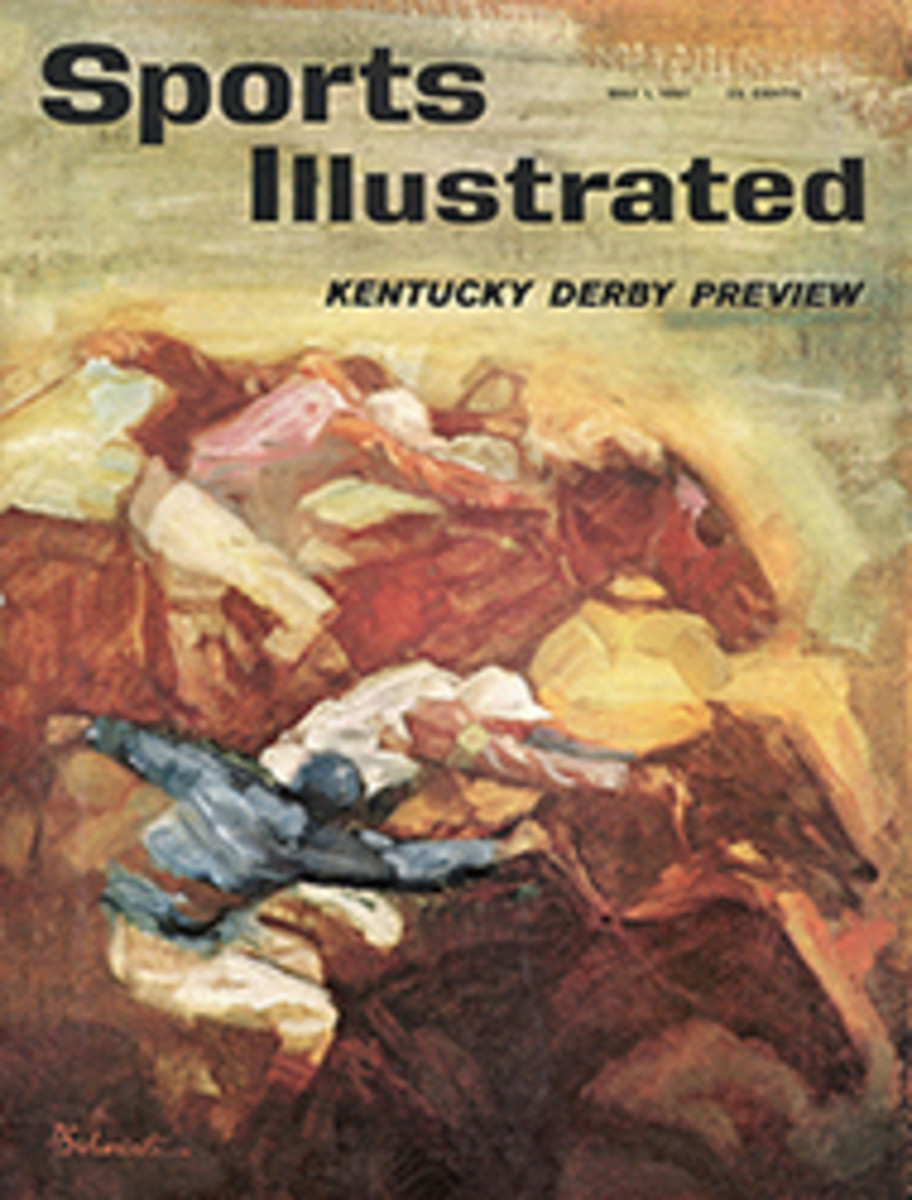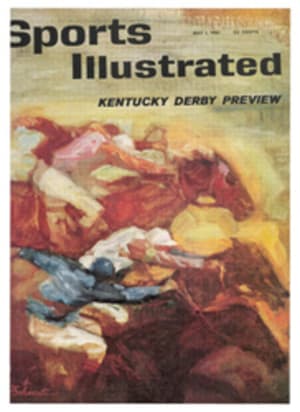
A harness racing quiz to measure the ingenuity and add to the knowledge of the $2 bettor and the armchair expert
? What is astandardbred horse?
•The standardbredoriginally was called by this name because he had to race up to a certainstandard of speed, usually against the clock. With few exceptions, today'sstandardbred must trace his pedigree back through generations of registeredstandardbreds. The exception is the occasional horse of unknown pedigree whocan meet a mile time limit of 2:20 for 2-year-olds and 2:15 for olderhorses.
? What is thedifference between a pacer and a trotter?
•A trotter raceswith a diagonally gaited motion. His left front leg and right hind leg moveforward at the same time, and then his right front leg and left hind leg. Thepacer, on the other hand, races with a laterally gaited motion. Both legs onthe right side move forward in unison, and then both legs on the left side.This movement gives pacers a swaying motion from side to side and explains whythey are often called sidewheelers.
? Horse A isleading in a trotting race, then breaks stride and goes into a gallop. Can hewin the race?
•If Horse A keepson galloping, he is disqualified. But if his driver can take the horse to theoutside of the track without interference to the other horses, and immediatelypull him back to a trot, then Horse A can go on to win the race. The onlycondition here is that Horse A must not, in the judges' opinion, have gainedany ground as a result of breaking stride.
? What are shadowrolls and why are they used?
•Shadow rolls arelarge sheepskin-type rolls placed above the horse's nose and just below hiseyes. They are used to cut off the horse's view of the track, so that he willnot shy at shadows, pieces of paper and other objects on the track.
? A typical racecard at the larger pari-mutuel tracks has two or three trotting races asopposed to six or seven paces. Why are there so many more paces?
•Pacers utilizehobbles (leather straps encircling the front and hind legs on the same side tokeep the horse's legs moving in unison and to help him maintain his gait).Trotters, however, have no such artificial device to keep them from breakinginto a gallop, the natural gait for a horse traveling at top speed. Trainers,therefore, find it easier to develop pacers, and more of them are brought tothe track each year. Since there is a greater supply of pacers on hand, thetrack management has to schedule a greater number of pacing races. At somepari-mutuel tracks, the management also prefers pacers because there seems tobe a larger amount of money bet on them: the public apparently feels there isless chance of a horse breaking stride in a pace.
? What is theGrand Circuit?
•The GrandCircuit, sometimes called the major league of harness racing, consists of 22tracks that run consecutive meetings from May through mid-November. Some GrandCircuit tracks are large plants with night racing, but most are true countrytracks at state and county fairs, where many of the classic harness events(like the Hambletonian) are raced.
? What is a headpole and why is it used?
•A head pole is astick, usually a billiard cue with a hole drilled in the handle for a leatherthong to pass through, that is fastened alongside a horse's neck and head tokeep his head straight. It is generally used on pacers.
? Why are trottersand pacers put through repeated warmups before a race, as opposed to the wayThoroughbreds are handled?
•Most drivers andtrainers believe that standardbreds, bred to go several heats in one day'sracing, are more rugged than Thoroughbreds and require the extensive warmups toget their strong bodies limber and the blood circulating. However, sometrainers today, perhaps influenced by European methods, are beginning to cutdown on the number of warmups.
? Horse A isdriven by a man weighing 140 pounds and Horse B is driven by a man weighing200. Does the 60-pound difference in drivers handicap Horse B, as it certainlywould if there were a 60-pound difference in jockeys' weights in a flatrace?
•This is acontinuing argument, and no one has yet come up with the definitive answer. Butmost harness racing experts believe that Horse B is not handicapped by hisdriver's weight and point out that many leading drivers are big men. They arguethat because almost all harness races now begin with a moving start (behind amobile starting gate), there is no sudden acceleration in which the greaterweight would initially slow a horse. Some feel that the precise balance of themodern sulky utilizes heavier weight to advantage—the greater force of forwardmomentum in a heavier man compensating for any extra drag his weight imposes,particularly in a front-running harness horse. But on a muddy track a heavydriver would seem to be a disadvantage.
? In the past 20years no filly has won the Kentucky Derby, but in the same period four fillieshave won the Hambletonian. Yet in harness racing there is no equivalent for thefive-pound sex allowance that fillies receive in flat racing. Why is it thatfillies do so much better in harness racing than in flat racing?
•There is no validexplanation. Fillies do seem to learn faster and at an earlier age than colts;in harness racing, which requires a mastery of certain complicated techniques,this may give fillies an advantage over colts in the 2-and 3-year-old races.Also, it appears that weight on a filly's back handicaps her more than weightpulled in a sulky.
? Horse A has postposition No. 1. Does this give him a big advantage over Horse B, who is on thefar outside?
•Yes. A surveytaken a few years ago showed that horses in post position No. 1 won about 17%of the time, horses in post position No. 8 about 8%. Gaining the lead or a goodposition near the rail is desirable in any horse race; in harness racing,because of the width of the bicycle sulkies, the outside horse has to go muchfarther and faster than the inside horse to gain the rail. Therefore theoutside horse is at a disadvantage.
ILLUSTRATION

